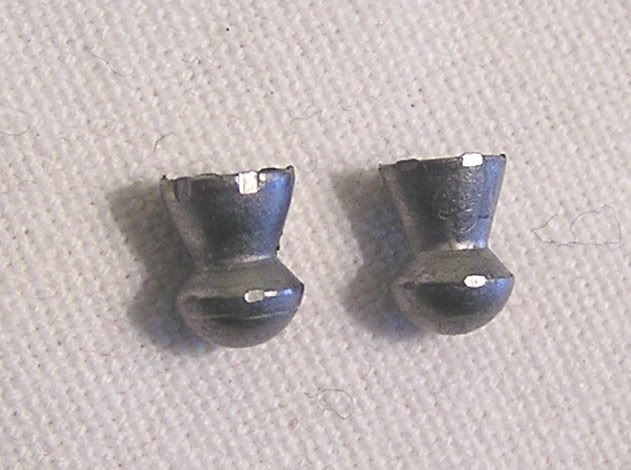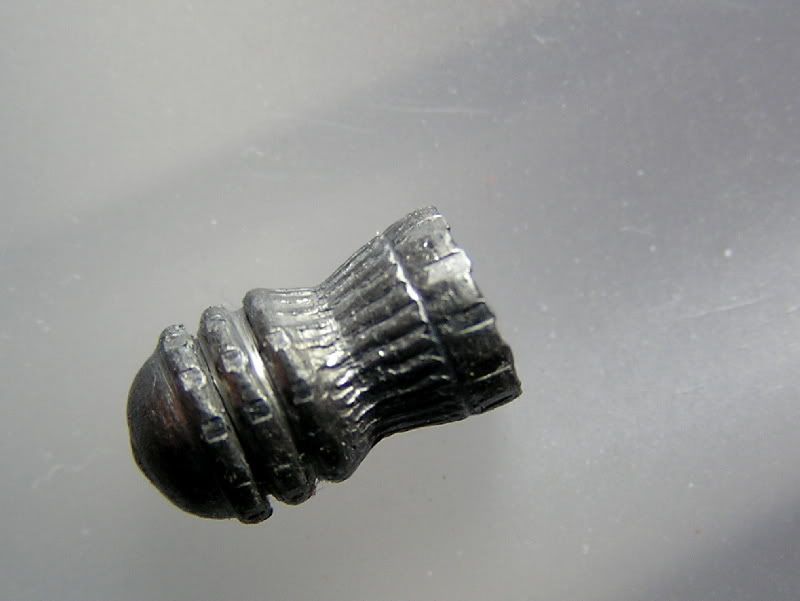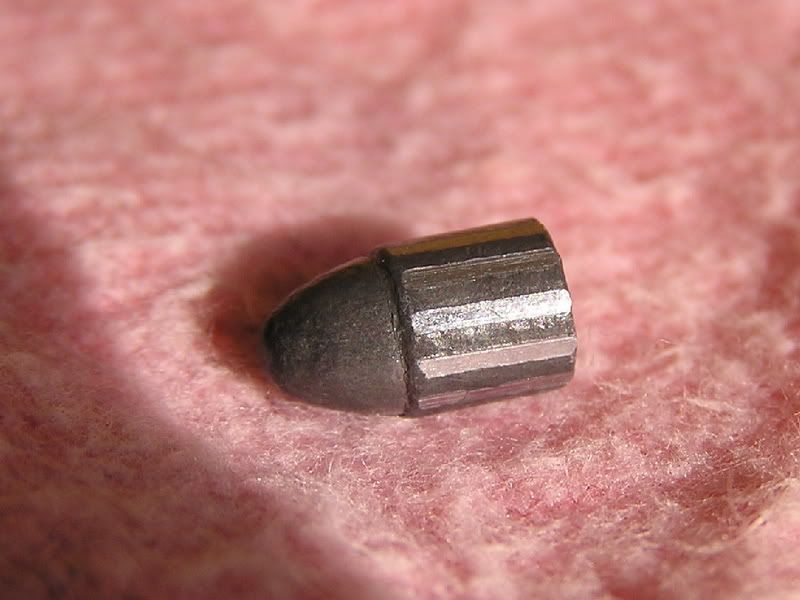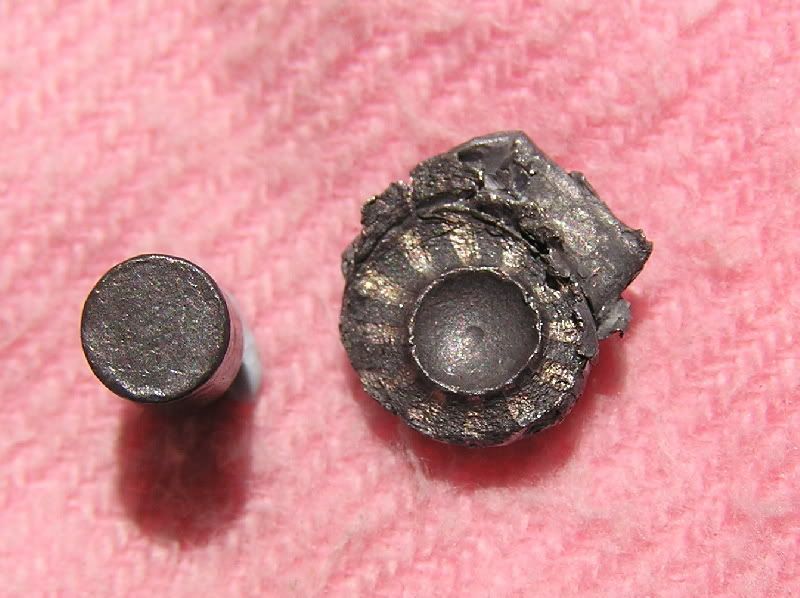We often see pellets that impact outside the main group on a target. There are many many reasons for this such as shooter error, wind effects, rifle and pellet incompatibility etc.
My conclusion is the same as was that of the great ballistics researcher Dr Mann 100 years ago and all the real bullet makers who feed the industry now...... When all the 100 other reasons and excuses for projectiles not landing on top of one another at any range have been accounted for..... the unbalanced projectile will still head in a different direction to its well balanced mates.
A perfect pellet may have its flight upset by many things.
However when the pellet itself is not balanced it will not fly to the same point of impact as others. It is a true "flier". You can do nothing about it. Nor can you eliminate it no matter how many machine rests, vices, voodoos or experts' help you employ, or whether you search out a draft free indoor range or warehouse in which to shoot.
My own experiments have involved groups shot in still air; shot in wind; shot in thunder storms; shot with weight matched pellets; visually inspected pellets; pellets with grooves filed out of the head or the skirt or both head and skirt on the same side and opposite sides; with the die marks determined with a magnifier and then oriented the same in chambering or at different points around the clock in chambering. Some groups have even been shot through thin sheets of paper placed at 20, 50 and 70+ yards to see if the group patterns were the same at all yardages. It was all done a hundred years ago with lead bullets and with the new jacketed 30-06 ( 1906 ). ..... Here is some food for thought based on my experimentation with air rifle shooting ( Excalibre and BSA Hornet with JSB Exact .22 pellets ).
Here is what appears to be a perfect pellet, or at least what you can see of it.

But is it perfect .. No. Five like it, shot well in excellent conditions, be they calm or consistently windy at the time of firing, will print approximately a MOA at 100 yards from my two rifles. However the group will be roundish with a hollow centre or have most impacts touching.
Here are examples:
One with most touching, one hollow: Both at 100 yards. JSB Exacts.
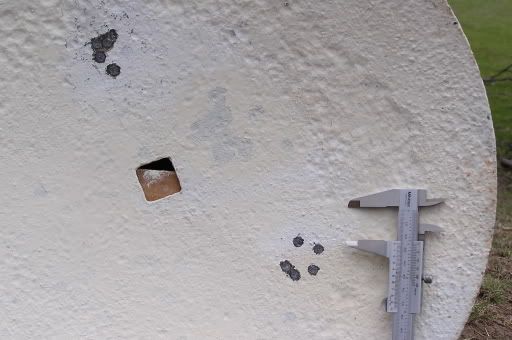
Another hollow group at 150 yards. It would have been hollow at 100 yards, hollow at 75 yards and probably a "one holer" at 40 yards:

Here are examples of pellets that will be fliers regardless of what else may impinge on their flight:
This one will set off in a different direction to others. It will leave the confines of the rifling in a trajectory that its off-centre Centre of Gravity dictates according to the spiral that the C of G was doing in its travel up the barrel.. It will also take a secondary spiral through the air as it oscillates and is steered into that spiral by the oncoming air stream.
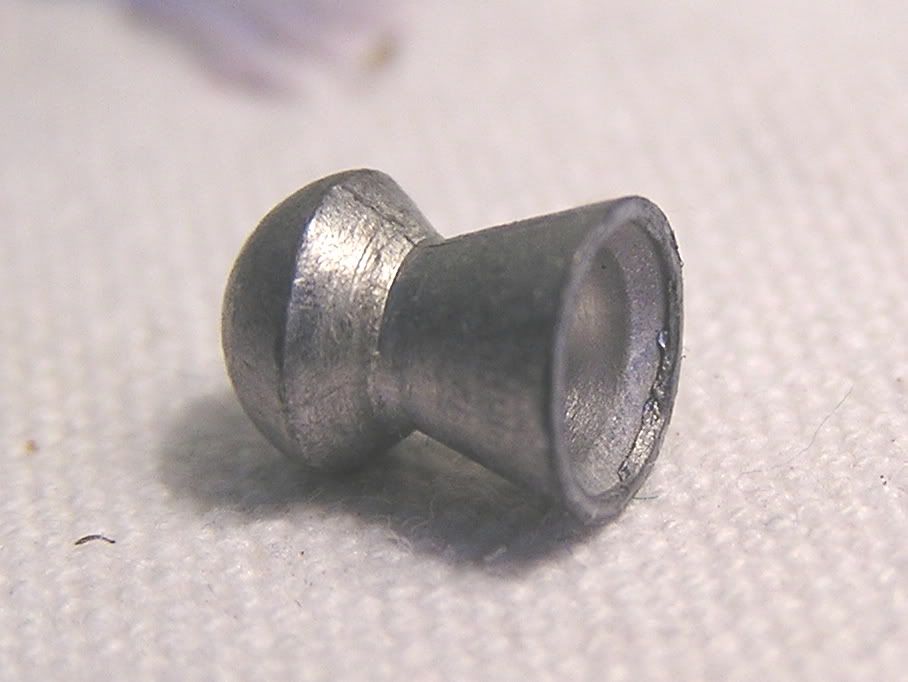
This one, at 5 o'clock in the magazine, has a blob of lead in the inside of its cavity at 9 o'clock in the pic. It too will be a flier as for the one in the pic above.
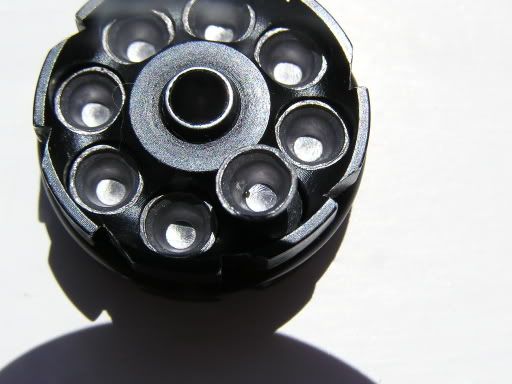
Here is what most probably was a wind affected lateral deviant ( but it may have been an unbalanced pellet, or both ). 125 yards JSB Exacts.
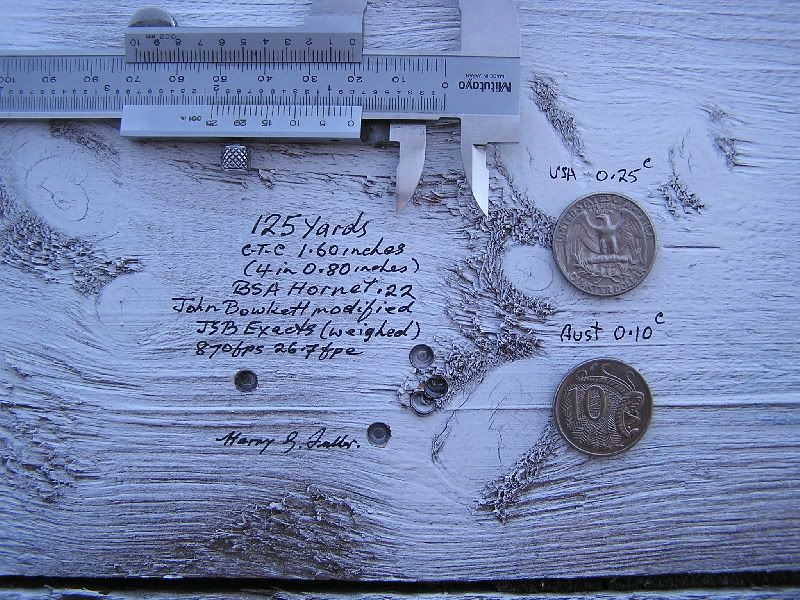
Here is a possible example of unmatched weight causing low shots ( but don't discount coincidental unbalanced fliers, MV difference or a dozen other reasons ). 100 yards.
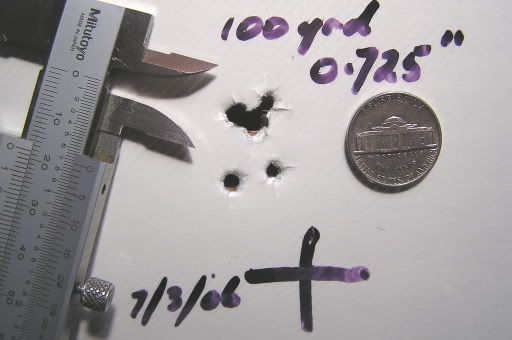
Here we have maybe eight excellent pellets but not perfect, one perhaps perfect in the centre of the circular group and one deviant affected by wind or imbalance or both or one of the other 100 reasons. ( Red dots denote the PsOI of 4 sighters on another target ). 118 yards.
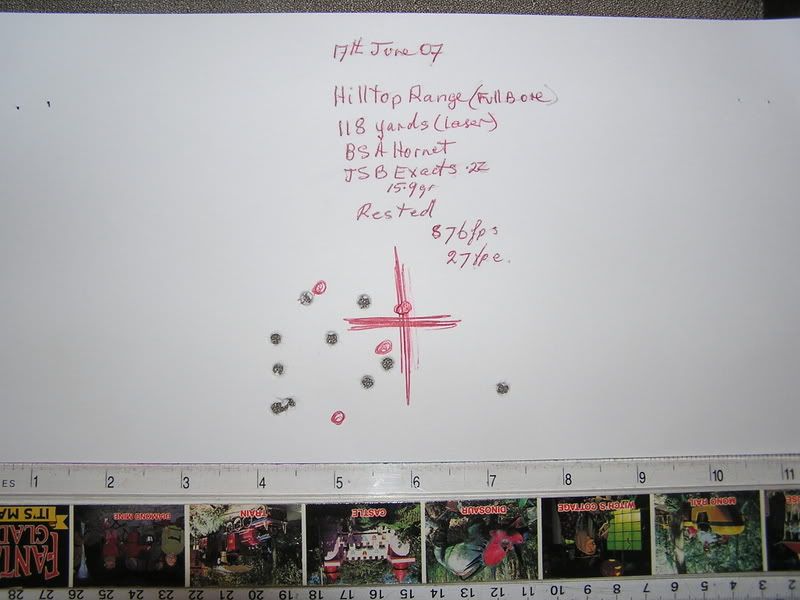
And if any are still reading this, here are two "groups" shot in a stiff variable wind. The top right deliberately shot at different wind strengths. but from the same direction. The bottom left, a 5 shot group shot picking "same" conditions when the wind was strong. ( different PsOA for the two groups ): 100 yards.
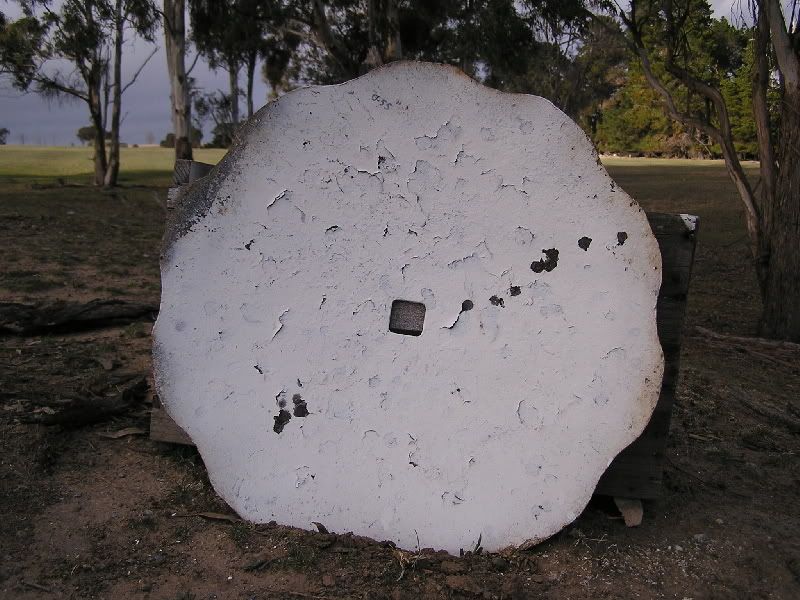
In summary....... You can work to eliminate 99 of the 100 reasons for deviant shots, but you will never get rid of 100% of the deviants without perfect pellets.
Powder bench rest shooters routinely shoot sub 0.20 inch 100 yard groups. In those groups there are still fliers, deviant bullets with inherent imperfections.
In my case, by careful inspection, weighing, measuring, and other methods not described here as yet, my group sizes have reduced, on average at 100 yards, from about 1.40 inches to 1.15 inches. The best have shrunk from 1.0 inches to less than 0.75 inches.....
Is it worth it? Well yes and no. I am research oriented so get satisfaction from that. We can learn a lot from analyzing targets, manipulating pellets and protocol.
But now that I have satisfied my curiosity to some extent and proven, to myself at any rate, that old Dr Mann had it right back in 1906, then I don't worry about that which I cannot control and maybe I shoot a little more relaxed too

